A SHORT HISTORY OF THE RAILWAYS IN
1876-2007
I would thank Nigel Hatch who helped me with the translation of this article into English.
Also many
thanks to Helena Bunijevac(Railway-Museum,
I: Introduction.
Dalmatia (now part of
The railway-system of today:
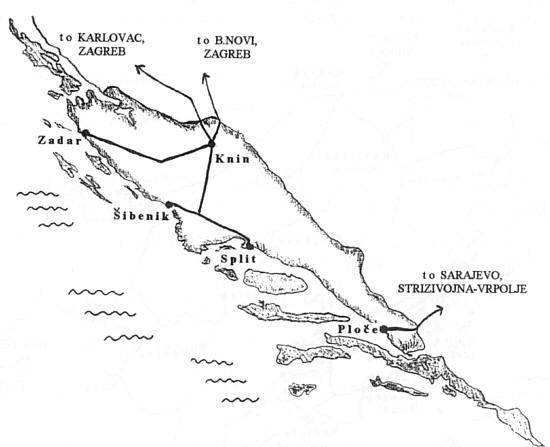
Copyright: Elmar Oberegger
In the past, the
Development of
railways in
Even by the end of
the Austro-Hungarian Empire in 1918 the provincial capital, Zadar, had no
rail link. The difficulty was that, during this time, it was not possible to
build a railway to the centre of
The railway-system of
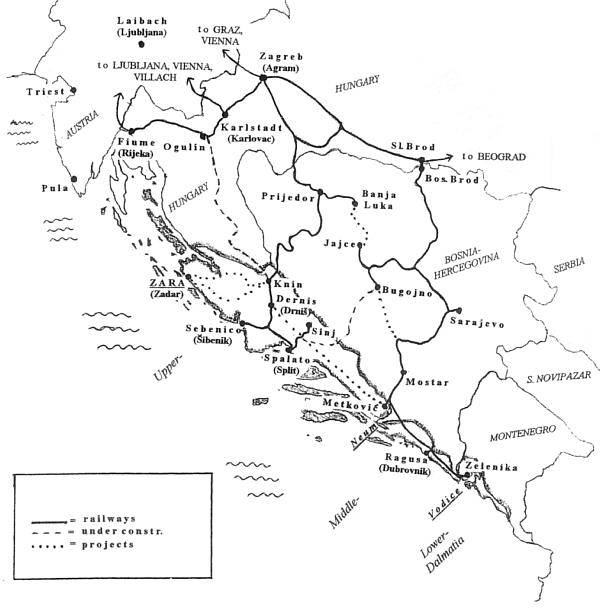
Copyright: Elmar Oberegger
At this time,
II: The long way to
1876 and the first railway in
Projects for
railways in
1. Trieste-Fiume(now
2. Split-Livno area-Beograd(Anton Bajamonti, mayor of Split, 1862)
3.
Zadar-Knin-Osijek(City of
4. Karlovac(in the Lika district)-Knin-Split/Sibenik(Bernhard von Wullerstorf-Urbair, Austrian Minister of Trade, 1866)
5. Split-Novi Sad-Budapest(Earl Eugen Zichy, 1868)
6. Construction of a Dalmatian network(Ralph Earle)
7.
8.
In 1866 the
Austrian Government began to mark out several rail routes in
Throughout the
Empire, railway development had been opened to private enterprise since
1854, though it seemed that the Government looked favourably on a projected
route through the
At about the same time, Commodore Bernhard von Wüllerstorf-Urbair, the Austrian Minister of Trade, included the Lika route in his great memorandum "Ein Eisenbahnnetz fur die osterreichische Monarchie" of 1866. The title of this document means "A Railway Network for the Austrian Empire". His concept was very ambitious, but excluded Bosnia-Hercegovina, which was not part of the Empire at the time.
The “Reichsbahn-Konzept”(1866) of Wüllerstorf-Urbair):
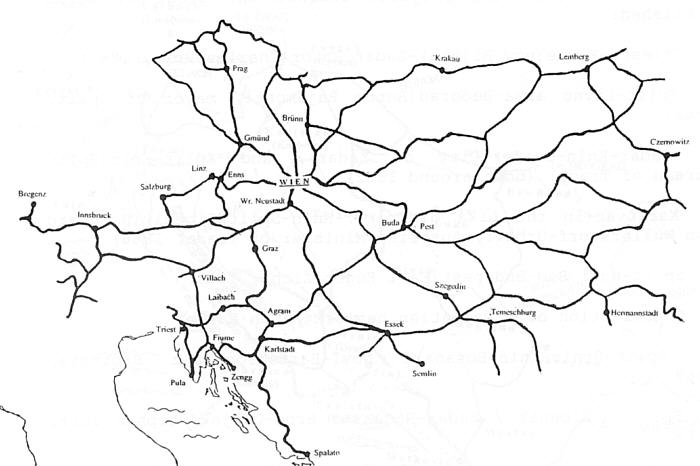
Copyright: Elmar Oberegger
In 1867, the year
of the “Ausgleich”, von Wüllerstorf-Urbair retired from politics altogether.
Born in
In 1869, the route Split - Knin - Austro-Hungarian frontier - Lika district - Austro-Hungarian frontier was included in the draft of the Austrian Railway Network Law, but this was only a declaration of intent, as finance remained unobtainable. In the meantime, fresh proposals were published, as follows:
1. Split-Sisak-Barcs, including branches from Knin to Sibenik and Zadar, from Otocac to Senj, and from Ogulin to Brod(Mayor Bajamonti's group)
2. Opuzen (in the Neretva valley) - into Bosnia-Hercegovina(Stephan Türr)
3. Construction of
a Dalmatian network(City of
4. Korinth and the
Adriatic coast to the border of
In 1871, the
Austrian Government put forward a plan to build a main line from
In 1873, the Empire suffered a great economic crisis, and private capital became very scarce. It became clear that the major private investors were not interested in Dalmatian railway projects, as the region had little natural wealth.
In the same year,
the railway from
A new Austrian
state railway policy now developed, which lasted until the end of the First
World War. The full Lika railway project was beyond their financial
capacity, but a start was made on this strategic link. Construction began in
1874, and the line from
The “Dalmatinerbahn”:
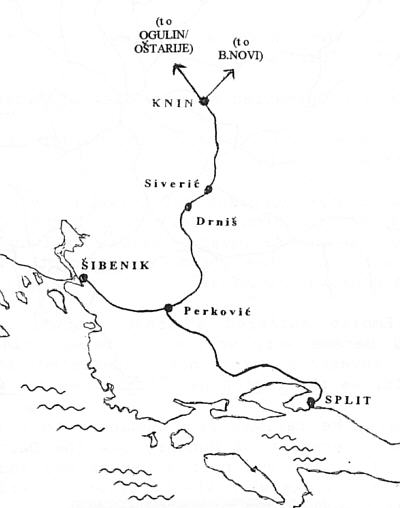
Copyright: Elmar Oberegger
III: Later projects.
In 1878, Bosnia-Hercegovina
was occupied by the Austro-Hungarian Army. The first requirement for both
the Austrian and Hungarian Governments was to develop this former Ottoman
territory economically. A suitable railway system was seen as an essential
part of this policy, particularly to link it to the coast of the
1. The Narentabahn,
from
The “Narenta-/Neretvabahn”:
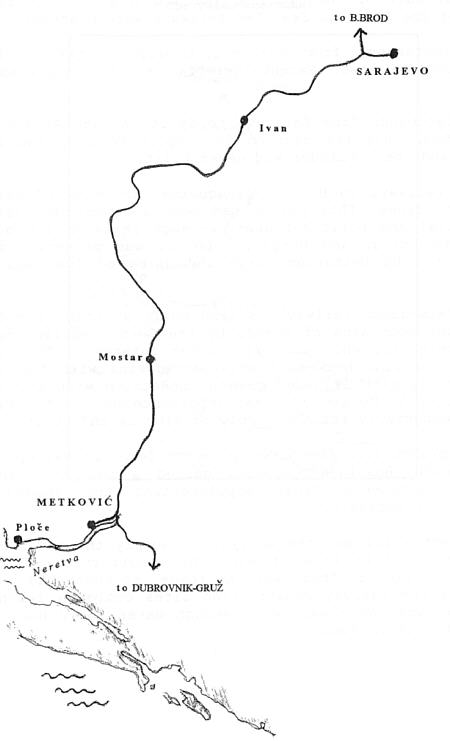
Copyright: Elmar Oberegger
2. The Spalatobahn, from
The “Spalatobahn”:
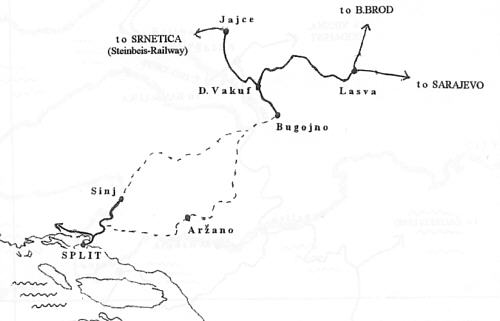
Copyright: Elmar Oberegger
Like other railways
in Bosnia-Hercegovina, these were narrow-gauge (76cm) lines. This policy had
been adopted for reasons both financial and political. Narrow-gauge railways
are quick and cheap to build, and
A private 76cm-gauge railway was also built at
this time from Knin into the mountains of
The “Steinbeisbahn”:
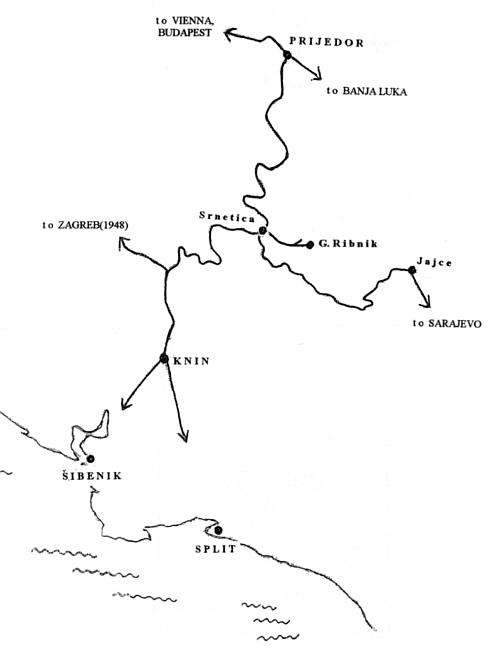
Copyright: Elmar Oberegger
In 1901, a branch from the Narentabahn to Zelenica was opened. From a branch, Bosnia-Hercegovina gained a new rail-linked harbour at Dubrovnik Gruz, supplementing the inadequate harbour at Port Metkovic.
Port Dubrovnik Gruz:
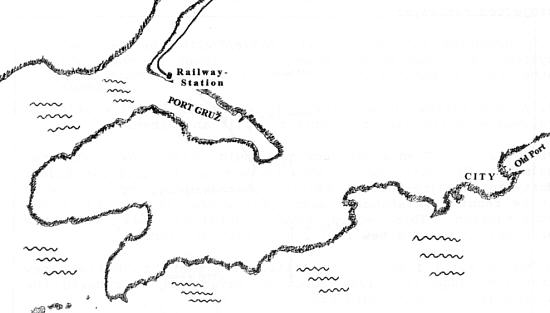
Copyright: Elmar Oberegger
More important still was the ability to supply the naval base at Kotor overland in time of war. The construction of this railway was difficult. There were no roads, so these had to be built before the railway construction sites could be reached. And all the time there was never enough water, only heat and grilling hot rock in summer.
The “Zelenikabahn”:
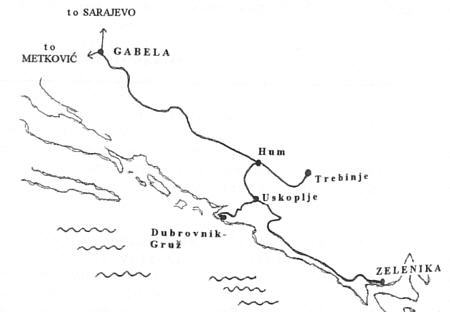
Copyright: Elmar Oberegger
IV: Projects before
the
In 1914, before the War started, there were the following projected railways:
1. Connection of the capital, Zadar, with the rest of the system. Two lines were planned, one through Obrovac, and the other through Benkovac.
2. A 76cm railway
from Drnis to Metkovic, to link the Zelenica railway with the line from Knin
to
Projects in Bosnia-Hercegovina would also have
affected
Project Steinbrück(Zid. Most)-Jajce-Mostar:
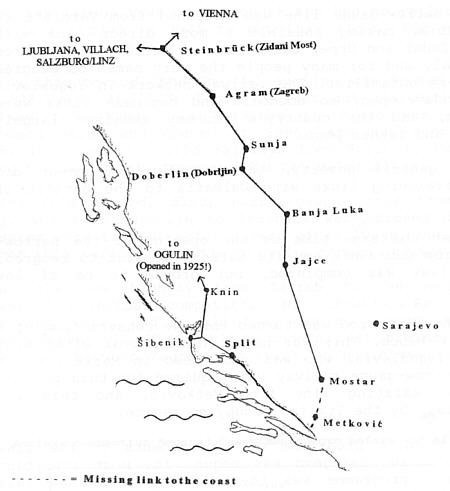
Copyright: Elmar Oberegger
Dalmatia would also
have benefited from plans to build a new standard gauge line from Doboj to
Samac and to rebuild the narrow-gauge line to
V: Structural Changes since 1918.
Major structural
changes have taken place to the railway system of
Before 1918,
railways had been built according to Austrian interests. A new
standard-gauge line was under construction (the Lika Railway) to link
After the end of
the war Dalmatia was suddenly part of a new nation, the South Slav state of
There was a route
between
By 1925, the
narrow-gauge line was extended from Vardiste to Uzice in
Despite this
general poverty, the Yugoslav Government did succeed in developing links
with
1. In 1925, at the
same time as the opening of the narrow-gauge route from
2. In 1937, the
first sod was turned for the construction of a new seaport at Ploce. This
was named Alexandrovo, after King Alexander of
3. In 1935, also, a
programme of improvements to the line between Metkovic and
4. In 1936,
construction also began of the standard gauge
After the
assumption of power in
The opening of the new railway to Bar affected
the Dalmatian rail system. Up to 1976 traffic between Beograd and the coast
and
Railway-connection Beograd-Adriatic Coast/Montenegro before and after 1976:
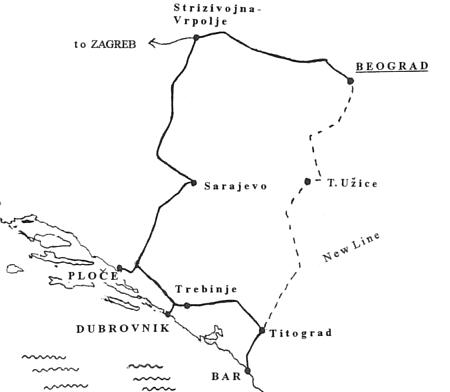
Copyright: Elmar Oberegger
This rail route now
became redundant and was closed. Since then, the famous town of
During this period,
the
During this period,
also, narrow-gauge lines from
Today the new highway from
VI: Sources.
BUNIJEVAC Helena: Najskuplja zeljeznica na svijetu. In: EuroCity 3 (2003)
BUNIJEVAC Helena a.o.: 120 godina prvih dalmatinskih pruga. –Zagreb 1997.
BUNIJEVAC Helena: Povijest zeleznickih pruga u Dalmaciji. In: EuroCity 2 (2000)
BUNIJEVAC Helena: Zeljeznica koje vise nema. Povijest uskotracne pruge Split-Sinj. In: EuroCity 1 (2005)
BUNIJEVAC Helena: Povijest privih zeljeznickih pruga u Dalmacij. In: EuroCity 2 (2004)
GELCICH Eugen: Handel, Gewerbe und Verkehr. In: Österreich-Ungarn in Wort und Bild 6. –Wien 1892, 342 ff.
HORN Alfred: Die Bahnen in Bosnien und der Herzegowina. –Wien 1964.
KONTA Jgnaz: Geschichte der Eisenbahnen Oesterreichs vom Jahre 1867 bis zur Gegenwart. In: Geschichte der Eisenbahnen der österreichisch-ungarischen Monarchie I/2, 1 ff.
OBEREGGER Elmar: Eisenbahngeschichte Dalmatiens. Ein Grundriß. –Sattledt 2007.
OBEREGGER Elmar: Zur Eisenbahngeschichte des Alpen-Donau-Adria-Raumes. 3 Bde. –Sattledt 2007.(„Port Ploce“, „Plocebahn“, „Dalmatinerbahn“, „Unabahn“, „Likabahn“ a.o.)
PETERMANN Reinhard E.: Dalmatien. –Wien 1911(Ill. Reiseführer auf den k.k. österr. Staatsbahnen).
RÖLL Victor: Österreichische Eisenbahnen. In: Enzyklopädie des Eisenbahnwesens. Hrsg. v. Victor Röll. –Berlin/Wien 1912 ff.
STRACH Hermann: Allgemeine Entwicklungsgeschichte der österreichischen Eisenbahnen seit 1897. In: GDÖUV, 1 ff.
SUNDHAUSSEN Holm: Geschichte Jugoslawiens. –Stuttgart a.o.1982.
VASILJEVIC Sava: Der Transitverkehr durch Jugoslawien und jugoslawische Seehäfen. –Beograd 1984.
WÜLLERSTORF-URBAIR Bernhard: Ein Eisenbahnnetz für die österreichische Monarchie. In: Österreichische Revue 1866, 22 ff.